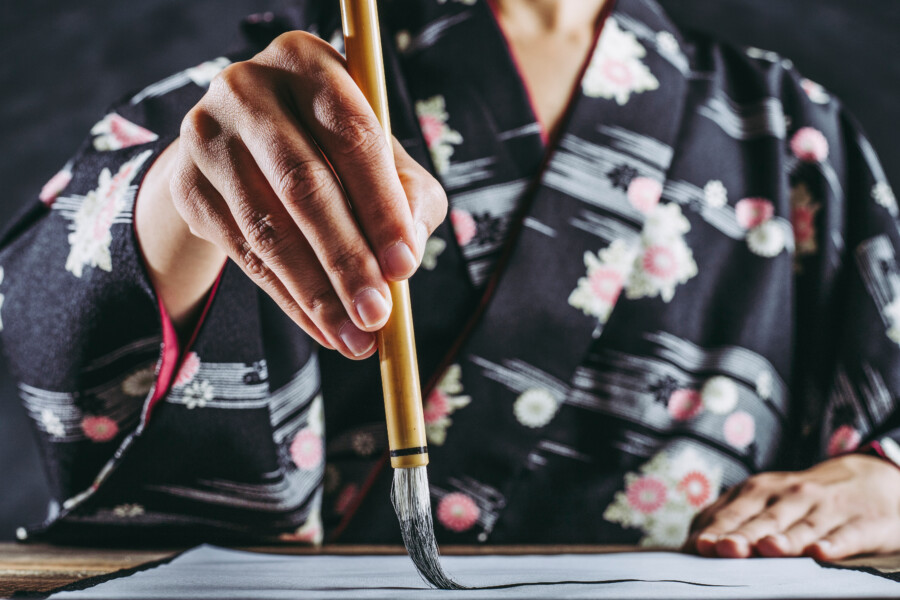
Application of Kanji Logo Design in Other Language Cultures
Kanji, nurtured in East Asian culture since ancient times, now captivates people worldwide with its profound meaning and beautiful form. In recent years, logo designs using Kanji have been gaining attention in the global market. This article examines how Kanji logo designs are being applied in different language and cultural spheres, exploring their appeal, challenges, and future possibilities.
Get a Culturally Accurate Logo →
The International Appeal of Kanji Logo Design
Visual Impact: Beauty Transcending Language Barriers
The greatest appeal of Kanji lies in its visual impact. Each Kanji character has an independent meaning and possesses aesthetic beauty. This is a feature not found in alphabets.
To people from non-Kanji cultures, Kanji appears like “pictures.” Therefore, even without understanding the meaning, they are attracted to its beauty and mystique. Many global brands leverage this characteristic by incorporating Kanji into their logos and designs.
Cultural Depth: Expressing Oriental Mystique
Kanji encapsulates thousands of years of history and culture. Therefore, logo designs using Kanji evoke the mystique of the East and profound philosophy.
For Western fashion brands or restaurant chains wanting to incorporate “Oriental mystique” or “Zen philosophy” into their brand image, Kanji logos become an effective choice.
Interpretation and Application of Kanji Logos in Different Cultures
Reinterpretation of Meaning: Changes in Cultural Context
An interesting phenomenon occurs when Kanji is used in different cultural spheres: the reinterpretation of Kanji meanings.
For example, the character “和” (wa). In Japan, it means “harmony” or “peace,” but in Western designs, it might be used to represent “tranquility” or “meditation.” Thus, due to differences in cultural context, the interpretation of Kanji changes, giving birth to new expressions.
Design Fusion: Harmony of Eastern and Western Aesthetics
When incorporating Kanji logos into designs from different cultures, it’s important to harmonize Eastern and Western aesthetics skillfully. For instance, various attempts are being made, such as combining traditional Kanji fonts with modern sans-serif fonts, or abstracting parts of Kanji and fusing them with Western graphic elements.
Such fusion becomes an effective means of expression for brands that want to maintain a global perspective while preserving their cultural identity.
Success Stories of Kanji Logos in the Global Market
Fashion Industry: Branding Incorporating Eastern Aesthetics
Many luxury fashion brands have found success with designs incorporating Kanji or traditional Japanese motifs. These brands skillfully utilize the visual beauty and cultural depth of Kanji to create brand uniqueness and a sense of luxury.
Food and Beverage Industry: Authentic Expression of “Wa” (Japanese Style)
Japanese cuisine is popular worldwide. To express authentic taste and atmosphere, many overseas Japanese restaurants adopt Kanji logos. The correct use of Kanji becomes a barometer of the restaurant’s authenticity and reliability.
Challenges and Countermeasures in Kanji Logo Design
Avoiding Cultural Misunderstandings: Importance of Correct Knowledge and Understanding
The biggest challenge when using Kanji logos in different cultures is avoiding cultural misunderstandings. Incorrect use of Kanji or inappropriate combinations can potentially damage brand image.
To avoid this, it’s essential to understand the correct meanings and usages of Kanji. Many global companies collaborate with Japanese or Chinese language experts and designers to select and design appropriate Kanji.
Respecting Culture: Beyond Superficial Imitation
Care must be taken to ensure that the use of Kanji logos doesn’t end up as mere pursuit of “exotic” elements. Designs based on true cultural understanding create long-term brand value.
This requires deep understanding and respect for the culture and philosophy behind Kanji. This attitude gives birth to truly attractive and persuasive Kanji logo designs.
Future Prospects: Fusion of Technology and Tradition
Kanji Logos in the Digital Age: Movement and Interaction
With the development of digital technology, the ways of expressing Kanji logos are also evolving. Not only static designs but also Kanji logos incorporating animation and interactive elements are increasing.
For example, new attempts are emerging one after another, such as Kanji logos that change according to user operations, or dynamic designs that change with time or season. These can be said to be new expression methods that fuse the traditional beauty of Kanji with the possibilities of digital technology.
Kanji Design in the AI Era: New Horizons of Creativity
The development of Artificial Intelligence (AI) is about to bring significant changes to the field of Kanji logo design. New possibilities are opening up, such as AI-generated Kanji and design proposals considering cultural context.
However, AI is just a tool. Ultimately, the creativity and cultural understanding of human designers will be the key to producing soulful Kanji logos.
Conclusion
The application of Kanji logo design in other language cultures symbolizes dialogue between East and West, tradition and innovation, and between different cultures. Due to its beauty and profundity, Kanji logos will continue to occupy an important position in the global market.
However, its use requires deep understanding and respect. Designs that create true empathy beyond cultural barriers — this is the path to demonstrating the true value of Kanji logos.
Kanji logo design will continue to evolve and open up new possibilities for expression. In this process, we can’t help but look forward to deepening understanding and creative dialogue between different cultures.
Japanese Language & Culture Supervision












